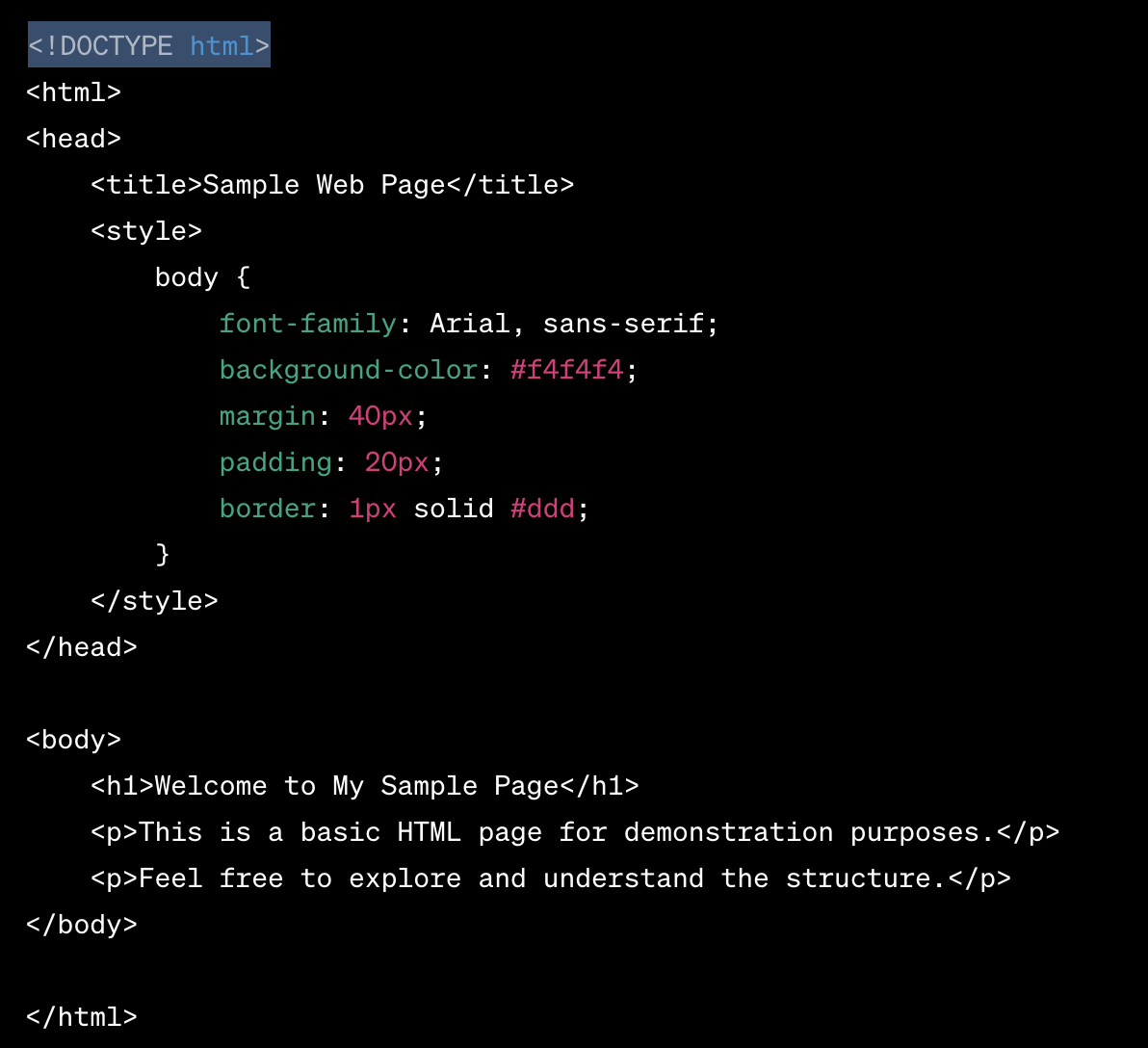Doctype
In the web design and development landscape, certain markers guide browsers on correctly interpreting and displaying a webpage. One such pivotal marker is the Doctype.
What is the Doctype?
The Doctype (<!DOCTYPE>) declaration stands at the forefront of every HTML document. Think of Doctype as the rulebook that tells browsers which version of HTML or XHTML the document uses. By understanding this version, browsers can render the page accurately, ensuring that users see the webpage as the designer intended.
The Doctype Declaration should always be the initial line in an HTML document, though comments can precede it if necessary.
Here is a sample of how the Doctype declaration would look:

<!DOCTYPE html>The Evolution and Importance of Doctype
HTML, the foundational language of the web, has seen numerous iterations since its conception. With its evolution, the need to distinguish between various versions became evident, leading to the introduction of Doctype. In the initial stages of HTML, browsers often rendered content in 'quirks mode,' attempting to display content even if it wasn't standard-compliant. However, as more structured versions like HTML4, XHTML, and the prevalent HTML5 emerged, browsers moved towards a 'standards mode,' referencing the Doctype to understand which rules should be applied.
Today, in a digital era emphasizing consistent user experiences, the importance of Doctype cannot be overstated. It acts as:
- Mode Selector: Guiding browsers between 'quirks mode' and 'standards mode' ensures content is uniformly presented across different browsers.
- Validation Tool: When developers validate their code, Doctype specifies which version's rules should be checked against.
- Professionalism Indicator: Utilizing the appropriate Doctype is a nod to upholding web standards and best practices.
Do's and Don'ts For Doctype
✅ Do's:- Always declare the Doctype at the very beginning of an HTML document.
- Choose the appropriate Doctype based on your design needs and your HTML version.
- Avoid omitting the Doctype. A missing Doctype may push browsers into quirks mode, leading to inconsistent rendering.
- Don't use outdated Doctypes unless you are maintaining legacy projects.
✨ Bonus Tip: The <!DOCTYPE> declaration is NOT case-sensitive.

Conclusion
The Doctype is a foundational pillar in web development, ensuring that browsers interpret and display content as intended. Providing this clarity at the onset of a document upholds the integrity of web designs and acts as a beacon of best practices. It's a testament to the web's evolution and an essential tool that guarantees uniformity and precision across various browsers.
FAQs
Without a Doctype, browsers might use 'quirks mode,' leading to varied displays based on their interpretation of the content.
Yes, for HTML5 documents, you should declare the Doctype (<!DOCTYPE html>) to inform browsers of the document's version.
While XML can have a Doctype, it usually defines data structure and type. In XML, Doctype may reference a DTD (Document Type Definition) for structure validation.
The doctype should always be at the start of an HTML document, preceding the <html> tag.
No, a document should have only one Doctype declaration. Having more can lead to errors or unexpected behaviors.
